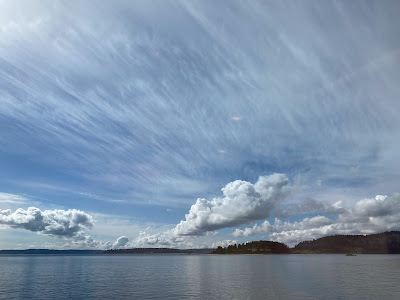Now what, captain?
I was really bad at calculus. Like deer in the headlights, what in the world language is this? awful at calculus. (Umm, I was also maybe a little casual about showing up all of the time, and I *ahem* accidentally missed the day that basically explained everything and from then on out I was pretty screwed, so go to class, kids.) It took 2 drops and 3 semesters, but I finally found a professor and a tutor that helped it make sense--calculus is a puzzle, and it was nearly fun! I think I ended up with a B- in the class and that was like winning the freakin' olympics!
At this point, I have a collection of medical oncologists getting dusty on the shelf and none of them could make the cancer puzzle work for me. Earlier this week, I had another consult at Fred Hutch (a cancer research/treatment center in Seattle with a sarcoma specialty group, formerly the SCCA) with yet another medical oncologist. This doctor was different. We ended up having a really great conversation about my case, his thoughts on it, and several treatment options. Granted, I showed up far more educated than I did in 2019 for my first visit to the SCCA, which was epically bad, but I digress.
Leiomyosarcoma is very rare, but because Fred Hutch has a sarcoma center, they get patients from near and far and see more of them than the average clinic. This oncologist sees several dozens of them a year, while the other oncologists that I've talked with see maybe 1 or 2 in a year. Two things struck him as very unique in my case. First, that I'm alive, well, and essentially unaffected by the cancer. On paper, life expectancy expired a few years ago. I missed that memo, whoopsies. Second, that though the lesions are growing, they're not spreading. They're the same ones from 2021, and though they'd expect to see much more extensive spread by this point, that's not the case. Conclusion to that is we've been doing something very, very right!
Alas, the liver lesions need to talking to, so what to do now?
The gist is to tackle the tumors by destroying the blood supply to them. Photodynamic therapy did a really good job of this, but (hindsight) it needed more time and more treatments. In the gaps and in the pivot to microwave ablation, the vascularity was able to regenerate to the point of allowing growth again. New tools and new photosensitizers mean that I can restart PDT and continue with my naturopath in WA rather than having to go to Mexico. Yay!
A new option is called Yttrium/Y-90, which the Fred Hutch oncologist was very enthusiastic about for my case. Y-90 would apply a very, very localized radiation directly to the tumor's blood supply. The prep is the most time consuming part, as they create a map of the vascularity and calculate how much of the radiation would be required. Otherwise, the procedure itself is very short, outpatient, and very low risk/low side effects.
Meanwhile, everyone is running more tests, both genetic and on the tumor itself, to check for any markers or targets that we can utilize.
Goals are different for every patient, so treatments are just as unique. As I'm mostly unaffected by the lesions, "curative" would be cool, but also not 100% necessary. Finding a management-type treatment or therapy to create stability and also be safely repeatable and replicable is my goal. We already know PDT works well on reducing the vascularity and Y-90 has a lot of success, too, which is very, very encouraging. That whole "stay alive until there are better options" strategy is working out!





Comments
Post a Comment